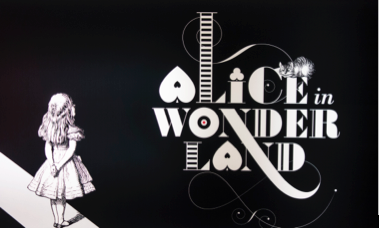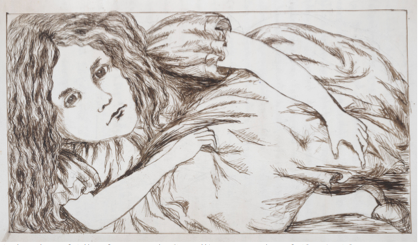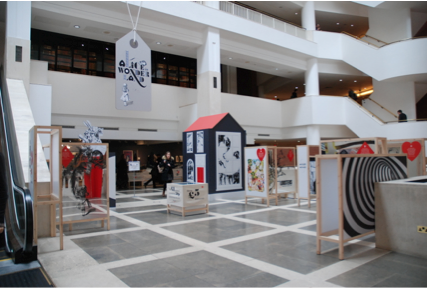Alice in Wonderland

Alice in Wonderland
British Library, London
November 20, 2015 – April 17, 2016
The British Library has staged a free exhibition to celebrate the 150th anniversary of the publication of Lewis Carroll’s Alice’s Adventures in Wonderland (1865), the now well-known story of Alice’s descent through a rabbit hole into a fantasy world inhabited by anthropomorphic creatures. The display engages the story of the book from its initial telling to Alice Liddell and her sisters through its publication, with iconic illustrations by John Tenniel, to the present. Because the story explores the theme of childhood imagination, the exhibition’s material is inherently fun and often vibrant. Among the first objects that the viewer encounters is Carroll’s original handwritten and illustrated manuscript, Alice’s Adventures Under Ground (1864), part of the British Library’s expansive collections. Various editions of the book, including one by surrealist artist Salvador Dalí, appear throughout the display. These versions, coupled with large-scale illustrations, film clips, Alice-related objects and ephemera, illuminate the ways in which the story has been continually reimagined in the 150 years since its first publication.
The British Library has aimed the exhibition at a wide audience, seeking to captivate both casual visitors and those who use the space on a day-to-day basis. The display occupies a central location within the library’s mezzanine-level atrium. Due to the building’s layout, visitors encounter the materials as they move from the lobby to the café, as well as from floor to floor. This positioning means that visitors have informal contact with the material, and in the case of people who frequent the library, may have repeat encounters. Moreover, because the exhibition does not require an admission fee, visitors wander in and out at their leisure.

Alice in Wonderland does not demand the careful scrutiny of other British Library exhibitions, and the display enhances the playfulness of the materials shown by drawing from the book’s text and illustrations. While the exhibition’s curators have positioned the bulk of the displayed materials in the darkened area behind the escalators, an introductory sequence located more visibly in front of this space functions to pull visitors into the exhibit. Comprised of panels featuring op-art-inspired imagery and funhouse mirrors, this sequence playfully attempts to mimic Alice’s journey down the rabbit hole. Keeping the book’s text central to the exhibition, these panels are numbered and display illustrated snippets of text, which function to walk the visitor through the story. The rest of the display visualizes the book’s text as well. Beyond the opening sequence, canvas-wrapped plywood frames support protective vitrines that display manuscripts, books, figurines, ephemera, and so on. The canvas is printed with lively imagery and features selections from the text of Alice’s Adventures in Wonderland. Periodically, larger visual elements punctuate these smaller-scale objects, such as a pair of Alice legs that comically jut up into the space between vitrines. While this mode of display lacks the permanence and perhaps even the authority of other British Library exhibitions, it centralizes the book’s text and playful tone at all times and visualizes it for the library’s visitors.

The exhibition’s introductory sequence also serves an important second function by encouraging playful audience engagement with the display. The funhouse mirrors provide an opportunity for visitors to examine and photograph their reflections. In fact, this is the only part of the exhibition that allows photographs, as it does not rely on fragile collected manuscripts and works on paper. After visiting the exhibition on several occasions, I observed that children and teenagers, especially, enjoy interacting with the display in this way. By staging this exhibition and including this interactive component, the British Library successfully activates viewers through play and humor in order to impart the story and imagery of this 150-year-old novel to a younger generation of readers.